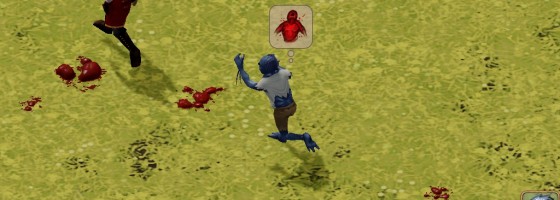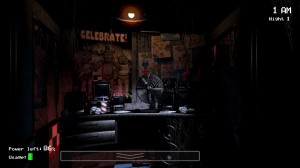When people talk about issues impacting game designers, one of the most popular terms is the “imposter syndrome”: Where after completing a project, the person is unsure if they were really good enough to do it, or if it was just a matter of luck. For today, I want to touch on something that could be even more dangerous to someone wanting to make a career as an indie developer, or what I’m dubbing: The Fast Burn Syndrome.
The Dream Game:
There are two main allures of becoming an indie developer: Being able to run your own studio and making your dream game. If there’s one common phrase I’ve heard from indie developers I’ve interviewed its: “This is the game I always wanted to make.”
That drive to create your dream game has been the fuel for so many games: Dwarf Fortress, Stardew Valley, Undertale, and many more. We’ve said this before about indie games: If that developer didn’t make their game, then nobody else was going to.
In some cases, that dream game could become the next big hit; other times it may not make any waves. However, no matter how well your game turned out, there is one big question to answer: What do you do next?
Hobbyist vs. Designer:
I’ve gotten in trouble with indie developers before about this point, and I think it’s going to happen again. There is a big difference between someone who can call themselves a game designer and someone who is just a hobbyist.
You cannot build a company off of just making one video game. Perhaps the hardest aspect of Indie game development is creating a sustainable model for you and your company. Once you’ve created your masterpiece, what do you do next?
This can be a struggling point for game designers: Do you create a sequel or continue to try and keep the game alive? Or do you do something completely different and try to strike gold twice?
And we’re just talking about the short term after the game is released; we haven’t gotten to studios that are going strong after five years or more. Speaking with designers Chris Park and Jake Birkett of Arcen Games and Grey Alien Games respectively, it can be very sobering to hear the challenges they’ve faced with keeping their studios going.
Creating a video game is the easy part; staying in the industry is when things get truly difficult. With that said, I know there are some people who are getting ready to comment that there are some games so big and successful that you can make a studio out of them, and that’s what we’re going to talk about next.
The One Game Fallacy:
The Video Game Industry is obviously hit-driven. When a game becomes popular and blows up, every major site will cover it. For new designers and fans, it can seem like these games just appear all of a sudden to instant fame and fortune.
When you hear about games like Minecraft, Stardew Valley, Darkest Dungeon, Undertale, Dwarf Fortress, and Five Nights at Freddy’s, it’s easy to think that these games succeeded because of passion alone, but there’s more to it.
First, these games had to earn the word of mouth and publicity in order to get noticed by the major outlets. I always get a kick out of seeing major sites cover games that I’ve already looked at months in advance, and act like they’ve just discovered some hidden treasure.
We’ve talked about this many times and how PR is a vital skill for succeeding in the industry. Being able to market your game and get it in front of people is essential. Once/if your game “blows up,” then the PR train basically runs itself at that point.
The second point is that just because you never heard of other games from these developers, doesn’t mean that this was their first idea. There is a massive difference between making your dream game as the first title of your company, and literally making that game as the first title in your career.
One of the most practical pieces of advice for new designers is “fail small.” If you’ve never made a game before, spending the next five to ten years of your life working on an untested concept is not wise. Designers who have made hit games have always worked on previous titles in their career; either releasing them, or just working on prototypes.
Becoming a Studio:
Our final point for today is one that I continue to harp on, no matter how it may annoy people: Running a studio is not the same as making a video game.
You may think designing your dream game will be the hardest thing you will do in the Game Industry, but running and maintaining a company with your games is a completely different challenge. This is why I always pay attention to developers after they’ve gotten their first big hit, so that I can see how they will now operate themselves going forward.
Keeping a studio going requires more than just understanding game design/programming/art. Suddenly, you now need to balance a checkbook, organize groups of people, handle PR, make sure that your game development is running smoothly, and other soft skills. And the worst part? This becomes harder as you add more people to your company.
I spoke to an indie developer last year who told me that if they ever did hit it big, he would not want to run a studio of anymore than about 20 employees (if I remember right).
You may think that have dozens of people working for you means that you can now make even grander games, but without the necessary skills to manage all of them, you’re going to be in for trouble.
And even if you do have those skills, that may not be enough to succeed. The problem with the fast burn syndrome is that it creates that pressure to keep going bigger. I still return to Gas Lamp Games as a studio who I would have loved to see what they could keep doing, but Clockwork Empires was so big of a failure that it erased all the goodwill (and profit) that Dungeons of Dredmor earned for them.
The Hits Don’t Always Keep Coming:
The Fast Burn Syndrome is a symptom of how the Game Industry views hit games. When a game does well, every website, streamer, YouTuber, and blogger is going to talk excessively about it. But what happens when you don’t succeed; who’s going to talk about you then?
This is why I’m always interested in talking to developers who have survived in the long-term, hit-driven or not, about their time in the game industry. Not everybody can be the next Nintendo or Blizzard, and understanding what you can and can’t make is an important skill to have. I’m about to say something that could be seen as being very mean, but sometimes, you may only have one game up your sleeve.
Even though it has gotten easier to get into the game industry, I think in some sense it has become harder to stay here.
To end our post for today, I have one question for developers who have lasted for five years or more in the industry: How do you keep going?




